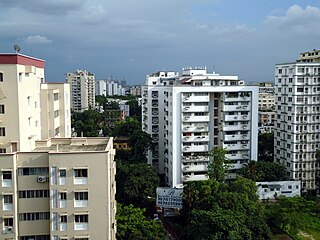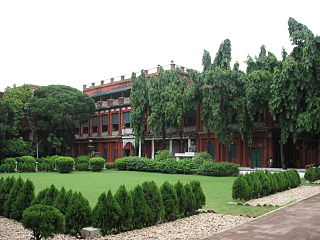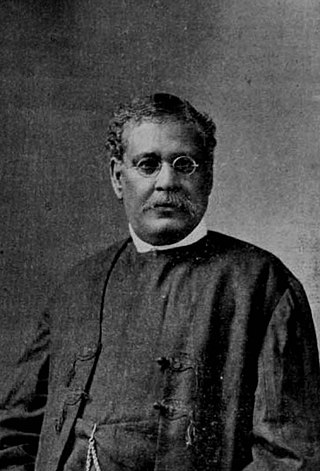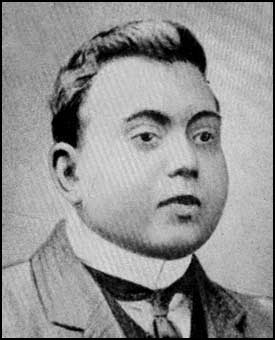Saraswat Brahmins are Hindu Brahmins, who are spread over widely separated regions spanning from Kashmir in North India to Konkan in West India to Kanara and Kerala in South India. The word Saraswat is derived from the Rigvedic Sarasvati River.

Ballygunge is a locality of South Kolkata in Kolkata district, West Bengal, India.
Bhowanipore is a neighbourhood of South Kolkata in Kolkata district of West Bengal, India.

Jorasanko is a neighbourhood of North Kolkata, in Kolkata district, West Bengal, India. It is so called because of the two (jora) wooden or bamboo bridges (sanko) that spanned a small stream at this point.
There are several theories about the origin of Kolkata, erstwhile Calcutta in English, the name of the capital of the eastern Indian state of West Bengal.

Sir Rashbehari Ghosh was an Indian politician, lawyer, social worker and philanthropist.

Kuzhuvelil Varkey Mathew is an Indian biblical scholar and a member of the Society for Biblical Studies in India.

Harinath De was an Indian historian, scholar and a polyglot, who later became the first Indian librarian of the National Library of India from 1907 to 1911. In a life span of thirty four years, he learned 34 languages.

Masala dosa, also called masale dosey, is a South Indian dish. It is a type of dosa and has its origin in the town of Udupi in Karnataka. It is made from rice, lentils, urad dal, chana dal, fenugreek, puffed rice, toor dal and dry red chilli, and served with potato curry, chutneys, and sambar. It is popular in South India, but can be found in all other parts of the country and overseas. In South India, the preparation of masala dosa varies from city to city. There are variations in Masala dosa like Davanagere butter dosa and paper masala dosa.

Indira Gandhi Sarani, formerly Red Road, is a road in Central Kolkata that runs from Eden Gardens to Fort William West Gate. South of Fort William West Gate, Red Road becomes Casuarina Road/Khiddirpore Road. The road, a wide boulevard, was built in 1820. It bisects the Kolkata Maidan. The British authorities intended for the road to be able to host large parades. The name 'Red Road' was given due to its surfacing.
Abu Asad Mohammed Obaidul Ghani (1903–1973), also referred to as A.M.O. Ghani, was an Indian politician, belonging to the Communist Party of India.
Watgunge is a neighbourhood of South Kolkata in Kolkata district in the Indian state of West Bengal.

Ekbalpur is a neighbourhood of South Kolkata in Kolkata district in the Indian state of West Bengal.

Hastings is a neighbourhood of Central Kolkata in Kolkata district in the Indian state of West Bengal.
Bankshall Court is officially the City Sessions Court of the Session Division of Kolkata in India. It is locally known as Bankshall Court.

Gobinda Chandra Khatick Road is a famous thoroughfare in the city of Kolkata, India. The road runs past Grace Ling Liang Church, Tangra Police Station, and largely through the China Town areas of Tangra in East Kolkata and crosses Pulin Khatik Road and Christopher Road at separate intersections. Gobinda Chandra Khatik road is 2.1 kilometers in length from the Tangra Slaughterhouse to the Topsia Junction. It demarcated the Eastern Fringes of the city at a time when Chinese operated Tanneries and Leatherworks dominated the area. Nowadays, China Town is a haven of Indo Chinese Fusion food and has crafted a legacy in its own right. Initially called Hughes Road until 1985, the name was renamed to recognise the contribution of Late Gobinda Khatik. Recent Urbanization and rapid growth has rapidly changed the landscape of Tangra and traffic snarls on the once empty road are common. The road is long and narrow and caters to Bi-Directional traffic. Dhangars, a community of Untouchable sanitary workers established their colony along this road. The road falls under Ward no. 56, 59, and 66 of the KMC.
Pulin Khatik Road is a famous thoroughfare in the city of Kolkata, India. It is 650 metre in length from Radhanath Chowdhuri Road to Chingrihata Lane in the Tangra area. The road crosses Gobinda Chandra Khatik Road at Tara Jewellers.
Girish Chandra Bose was an Indian educator and botanist.

Nityanand Saha was an Indian revolutionary from West Bengal, known mainly for his involvement in the Satyagraha movement against the Portuguese government, to free Goa from Portuguese rule, under leader Ram Lohia. He was an active member of Janata Seva Sangh in Payradanga, Nadia, West Bengal, and on 13 August 1955, he was shot dead by the Portuguese government, along with his associates Baburao Thorat and Karnail Singh.
Rajashekhar Mantha is an Indian advocate who is serving as permanent judge of Calcutta High Court since 16 September 2019. Previously, he was an additional judge from 21 September 2019 to 15 September 2019. He was known for his controversial judgements made against Government of West Bengal.










